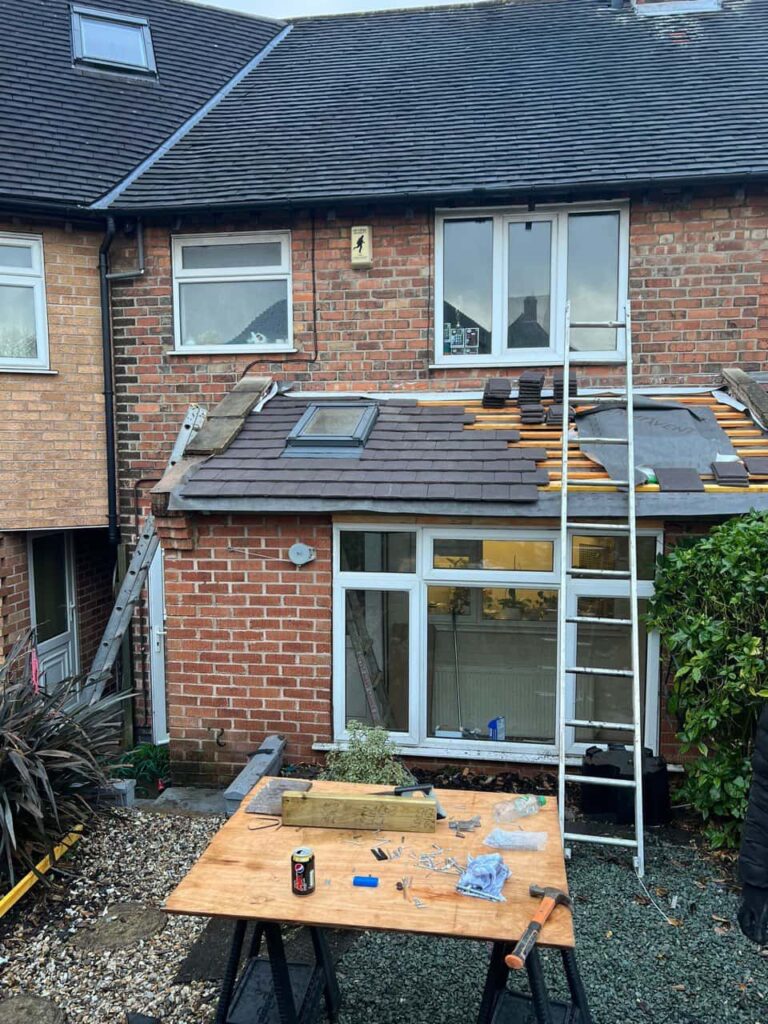Felt roofing remains one of the most widely used materials for flat roofs across the UK. Known for its cost-effectiveness, durability, and versatility, it’s a trusted option for garages, extensions, and commercial buildings alike. However, one common issue that homeowners in Isleham may face with this roofing type is blistering.
At Isleham Roofing Repairs, we often receive enquiries about why blisters form on felt roofs and how to stop them from spreading. Understanding the causes and preventative measures can help you maintain a longer-lasting, watertight surface that performs effectively year-round.
What Is Roof Blistering?
Blistering occurs when air, moisture, or gas becomes trapped between layers of roofing material or between the felt and the roof deck. As temperatures rise, these trapped pockets expand, creating raised bubbles or domes on the roof’s surface.
Although small blisters might seem harmless at first, they can worsen over time. If left untreated, they may cause the felt to crack or split, exposing the underlying layers and allowing water to penetrate the structure beneath.
Common Causes of Felt Roof Blistering
1. Trapped Moisture During Installation
One of the leading causes of blistering is moisture becoming trapped beneath the felt during installation. This often happens when roofing work is carried out on a damp surface or during periods of high humidity. As the temperature rises, the moisture vaporises, forming bubbles under the felt.
2. Poor Adhesion or Application
If the adhesive used to bond the felt layers isn’t applied correctly or uniformly, air pockets may develop. Similarly, if layers are not pressed together firmly or installed in unsuitable weather conditions, the bonding strength weakens — creating the perfect environment for blistering.
3. Heat and Temperature Fluctuations
Flat felt roofs absorb heat during the day and cool rapidly at night. This constant expansion and contraction can place stress on the roofing membrane. Over time, this thermal movement can loosen the adhesive bond, causing bubbles or blisters to appear.
4. Ageing and Wear
As a felt roof ages, the material naturally becomes less flexible and more prone to deterioration. UV exposure, foot traffic, and general weathering can weaken the surface, leading to small cracks or gaps that trap air and moisture underneath.
5. Insufficient Roof Ventilation
Poor ventilation can increase humidity levels beneath the roof structure, particularly in buildings without adequate airflow. This trapped moisture has nowhere to escape and may rise through the decking to cause blisters on the felt surface.
Why Blistering Should Never Be Ignored
While blistering may start as a minor cosmetic issue, it often indicates deeper underlying problems. Ignoring these signs can lead to more severe roofing failures, including:
- Water ingress that leads to dampness, leaks, and interior damage.
- Cracking and splitting as blisters expand or rupture under pressure.
- Reduced lifespan of the roofing system due to structural stress.
- Thermal inefficiency, as trapped air disrupts the insulation layer beneath.
For these reasons, regular inspections and timely repairs are essential for maintaining the performance of your flat roof.
How to Prevent Blistering on Felt Roofs
1. Ensure Proper Installation Conditions
The foundation of a long-lasting felt roof begins with correct installation. Roofers should always work on dry, clean surfaces and apply felt in moderate weather to avoid moisture entrapment. At Isleham Roofing Repairs, our team schedules felt roofing projects under suitable conditions to ensure a perfect bond and smooth finish.
2. Use High-Quality Materials and Adhesives
Modern felt roofing systems use advanced bituminous materials and reliable bonding agents that are far less susceptible to blistering. Choosing durable, professional-grade materials helps prevent premature defects and improves roof longevity.
3. Maintain Adequate Ventilation
Good roof ventilation allows trapped moisture to escape before it causes damage. Ensuring that loft spaces or sub-roof areas have proper airflow reduces humidity build-up, helping to prevent blister formation over time.
4. Conduct Regular Roof Inspections
Routine maintenance is the best way to spot early signs of blistering. Homeowners in Isleham can benefit from annual roof inspections by professionals such as Isleham Roofing Repairs. Early detection allows small imperfections to be addressed before they escalate into costly issues.
5. Address Drainage Problems
Flat roofs must have effective drainage to prevent standing water. Pooled water increases pressure on the felt surface and can exploit even small weaknesses. Ensuring that outlets and gutters remain clear helps prevent moisture accumulation that can contribute to blistering.
How Roof Blister Repairs Are Carried Out
When blistering is detected early, targeted repairs can restore the roof’s integrity. Professional roofers typically cut open the blister, dry the affected area thoroughly, and reapply new felt with fresh adhesive. For extensive damage, re-felting or overlaying may be required to ensure a watertight finish.
At Isleham Roofing Repairs, we assess each roof carefully before recommending the most effective repair method. Our goal is always to preserve as much of the existing structure as possible while ensuring complete protection from future blistering.
Long-Term Roof Care Tips
Preventing blistering is not just about installation — it’s also about ongoing maintenance. Homeowners can take a few proactive steps to extend the lifespan of their felt roofs:
- Clear debris regularly to prevent water pooling.
- Trim back overhanging branches that cast shade and hold moisture.
- Avoid walking on the roof unnecessarily.
- Schedule professional inspections at least once a year.
Conclusion
Blistering on felt roofs is a common but preventable issue that can lead to serious structural problems if ignored. With proper installation, ventilation, and maintenance, homeowners can significantly extend the life of their roofing system.
For professional flat roof repairs, inspections, and maintenance in Isleham, Cambridgeshire, Isleham Roofing Repairs provides dependable, high-quality services to keep your felt roof strong, watertight, and resilient throughout the year.
Call us on: 01638 591 695
Click here to find out more about Isleham Roofing Repairs
Click here to complete our contact form and see how we can help with your roofing needs.

